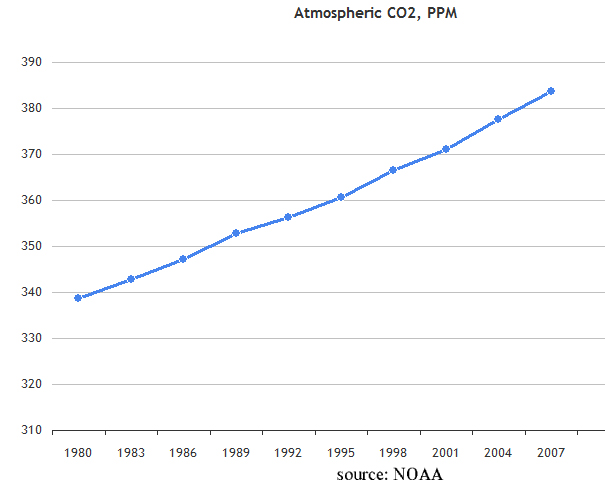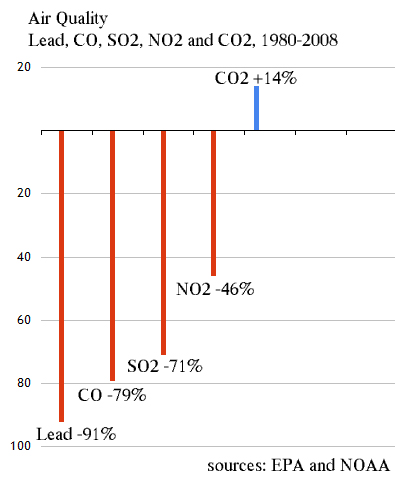Several folks have already taken note of this but I wanted to add a few thoughts. Mark Perry at the American Enterprise Institute seems to be inadvertently making the case for climate change legislation. First, he lists a series of things environmentalists predicted would happen assuming business-as-usual levels of pollution. Then, using this chart, he shows that four major sources of air pollution have decreased significantly since 1980.

Perry gives all of the credit for these environmental victories to improvements in energy efficiency. But as Matthew Yglesias points out, he got it all wrong:
In the real world, what happened is that we passed environmental laws, and conservatives argued that they would destroy the economy. And yet here’s the economy, undestroyed. And here’s the environment, cleaned up.
Bradford Plumer explains how this played out:
Okay, but why do we suppose pollution just magically dropped like that? Perry claims it’s because the United States got richer. Here’s another possibility: In 1970, Congress amended the Clean Air Act to tackle, among other pollutants, nitrogen dioxide, sulfur dioxide, carbon monoxide, and lead (the new rules were slowly phased in over the next decade). Most notably, the law acted to phase out lead from gasoline by the mid-1980s. And lo and behold, it worked—you can see a sharp drop in lead emissions over that period (with a few further steps needed after that). It was a massive public-health success story.
Indeed. And the EPA also took a variety of other measures to minimize emissions of the pollutants in question during the time period shown in Perry’s chart. In addition to Perry’s remarkable cognitive dissonance, what stuck out to me about his argument was that one key air pollutant he failed to include was carbon dioxide. Here is what atmospheric CO2 looked like over the same period of time:
And as Brian Merchant writes, “America grew more prosperous while curbing pollution … only with powerful regulations firmly in place — and there’s every reason to think the same trend would occur with the adoption of controls on greenhouse gas emissions.” Here are concentrations of the four pollutants Perry looked at, plus carbon dioxide, over the same 1980-2008 period.
The key difference, of course, is that while the four air pollutants on the left have been subject to federal legislation and regulations limiting their emissions for several decades, the air pollutant on the right has not been subject to the same treatment. Yet, at least.
Originally published at EnviroKnow.




